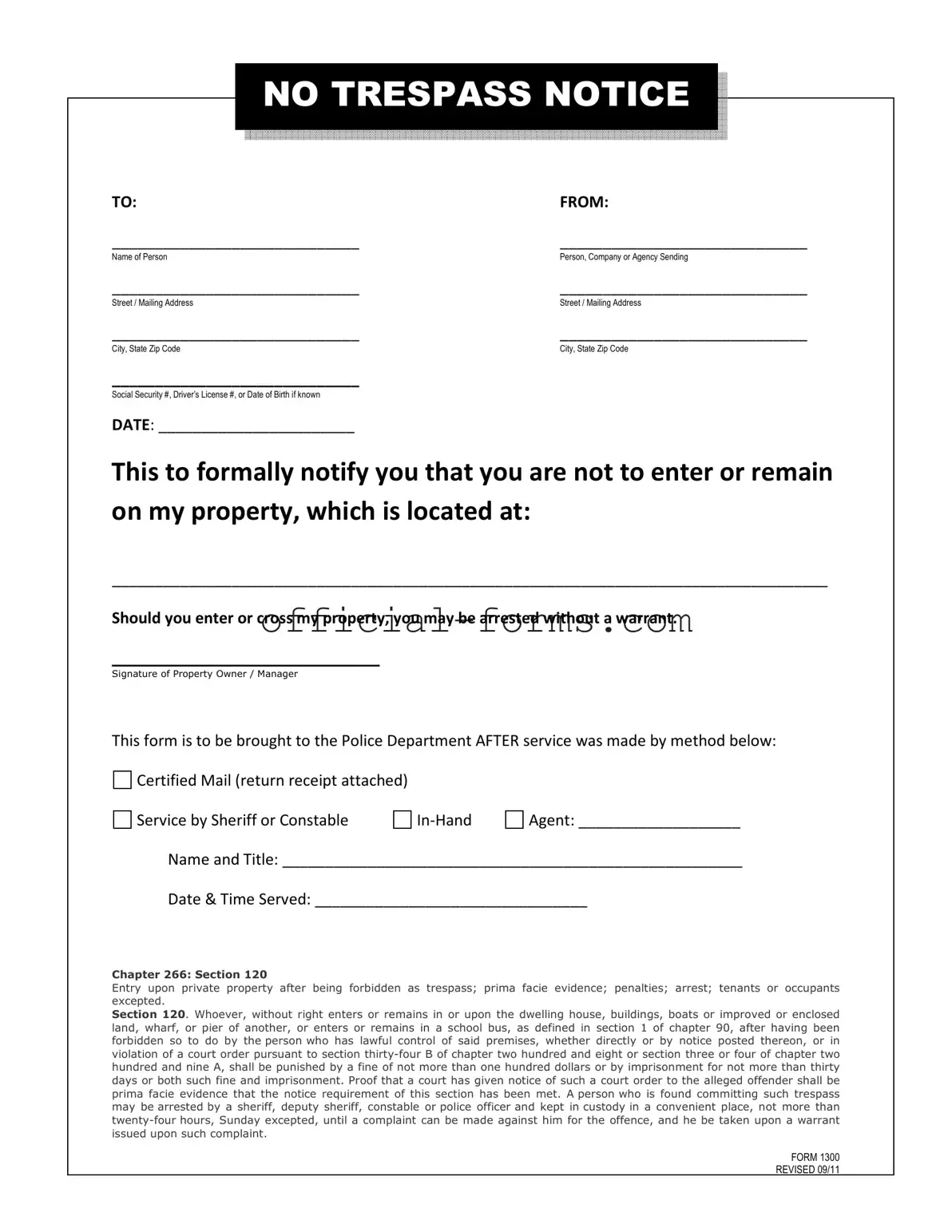When it comes to protecting personal property, a No Trespassing Letter serves as a crucial tool for property owners. This letter clearly communicates to individuals that they are not permitted to enter or remain on the specified property. The form includes essential details such as the names of the parties involved, the address of the property in question, and the date of notification. It emphasizes the seriousness of the situation by stating that unauthorized entry could lead to arrest without a warrant. Additionally, the letter outlines the proper methods for delivering the notice, which can include certified mail, service by a sheriff or constable, or in-person delivery. Each method ensures that the recipient is aware of the restrictions placed upon them. Completing this form accurately and delivering it properly can help establish a legal basis for taking further action if necessary.
